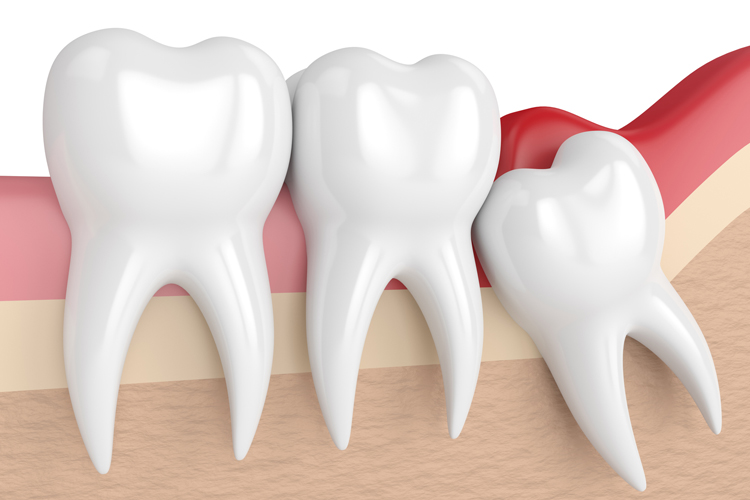Scientists believe that this is actually a matter of security.
The mystery of the molars, who usually start growing up in their late teens, has puzzled scientists for some time. However, researchers from the University of Arizona, USA, believe that they have solved the mystery. Anthropologist Halzka Glovachka and her colleague Gary Schwartz analyzed changes in different skulls to compare their evolutionary development. They compared the bones and teeth of primates in 3D models and found that the time of growth of human molars is closely related to the delicate balance of biomechanics in the skull.
The teeth we use to grind food usually come out in three stages around the ages of 6, 12 and 18. Other primates acquire molars earlier.
Chimpanzees have molars at 3, 6 and 12 years of age. The yellow baboon has molars at the age of 7, and the rhesus macaques at the age of 6.
An important factor that limits the time required for teeth to appear is space. If the jaw is not large enough for a full set of teeth, they cannot grow into it. Humans do not have as much space in the mouth as some other primates, but this is not the exact explanation for why sages appear so late or why their growth often causes certain problems.
Scientists believe that this is actually a matter of security.
“Our jaws have been shown to grow very slowly, probably due to our overall evolution and in combination with our flatter faces, which leads to a delay when it comes to mechanically safe space.”
The hind molars of primates are located just in front of the two temporomandibular joints, which, unlike the others in our body, must function in perfect synchronization. They must also exert significant pressure on one or more points in the jaw so that primates can bite or chew. If a tooth is in the wrong place in this process, the resulting pressure can have a bad effect on the jaw, which is simply not large enough to withstand that pressure. Therefore, species with longer jaws are likely to develop a suitable structure for the whole set of teeth earlier. People are not so lucky and have to wait for the skull to develop to such an extent that the pressure exerted on each group of adult molars does not damage the growing jaw.
The removal of the molars may improve taste perceptions decades after the intervention, Medical Express reported, citing a study by scientists from the University of Pennsylvania.
The study involved 1,255 people, 891 of whom had molars removed. Their taste perceptions were tested by five different concentrations of sucrose, sodium chloride, citric acid and caffeine.
They had to drink from each solution, splash with it and spit it out, and then indicate what taste they felt – sweet, salty, sour or bitter.
It turned out that in each of the four solutions the taste perceptions of the people with extracted molars were stronger than those of the control group. It has also been found that this is more pronounced in women.
The researchers concluded that people whose sages were removed a long time ago experienced an improvement of between 3% and 10% in taste perceptions.
“This study shows us that taste perceptions can improve slightly between and up to 20 years after the intervention. This is a surprising but impressive finding that needs to be better understood,” said Richard Dotty of the University of Pennsylvania. who is leading the study.
The data from the study are published in the journal Chemical Science.












